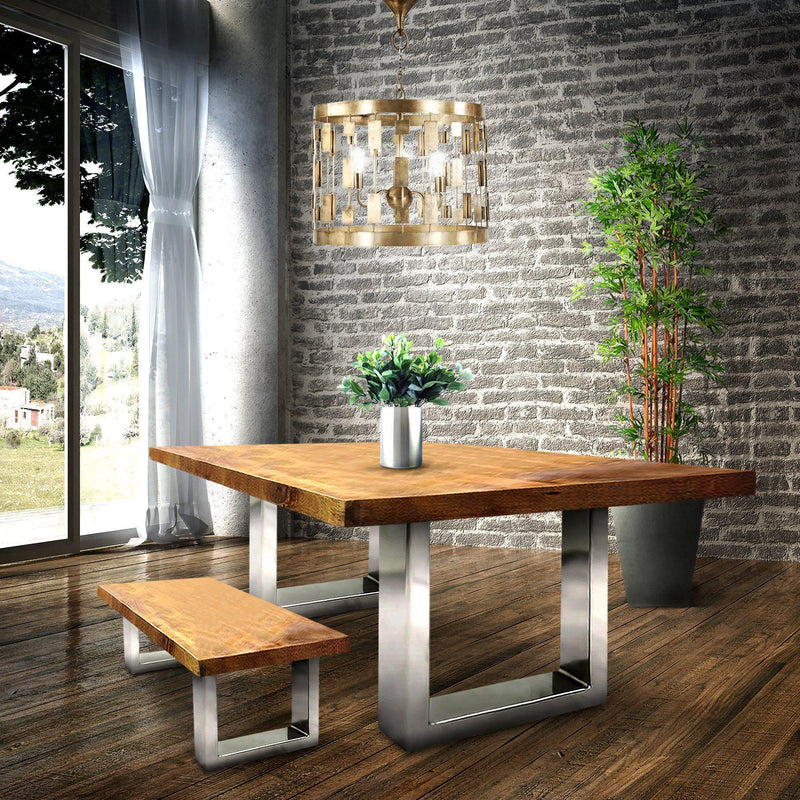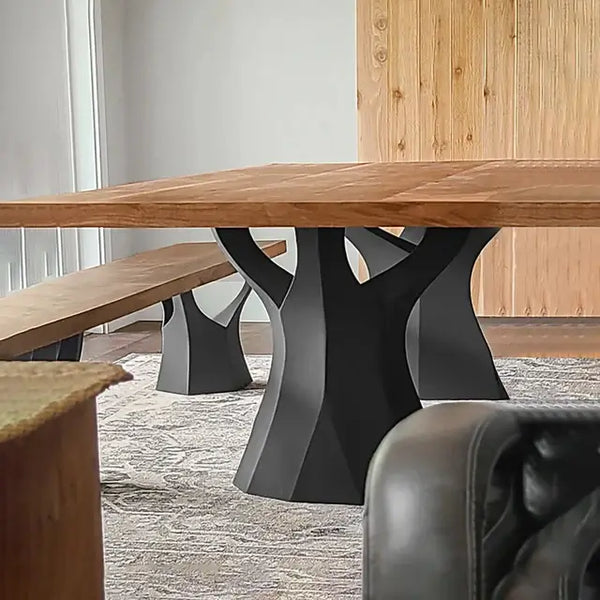Upgrade Your Furniture with Custom Dining Room Table Legs
Upgrade Your Furniture with Custom Dining Room Table Legs
Blog Article
From Conventional to Modern: Locate the Suitable Dining Room Table Legs for Your Design
The selection of dining-room table legs plays a critical duty in defining the total character of your space, bridging the gap between traditional craftsmanship and modern looks. While timeless designs such as cabriole and transformed legs evoke a sense of timeless elegance, contemporary styles like hairpin and geometric options present a possibility for striking aesthetic interest. Reviewing the right balance between these styles calls for a nuanced understanding of your existing design and personal preference. As you take into consideration these components, the inquiry stays: how can you seamlessly incorporate these varied leg designs to create an unified dining experience?
Recognizing Table Leg Styles
The selection of eating area table leg designs can dramatically influence both the aesthetic appeals and performance of the area. Each leg style contributes special aesthetic aspects and sensible attributes, providing to diverse style preferences and use demands. Understanding these styles is critical for choosing the best dining table that lines up with your general interior decoration vision.
For example, tapered legs supply a tidy, timeless appearance that can improve a space's sophistication, while stand bases provide stability and make the most of legroom, making them perfect for smaller rooms. Hairpin legs, a hallmark of mid-century contemporary style, introduce a commercial style, enabling a ventilated, open feel. Trestle legs stimulate rustic beauty, offering durable assistance and a feeling of timelessness.
Additionally, the option of materials plays a considerable role. Wood legs can bring warmth and appearance, whereas metal options usually convey a streamlined, modern vibe. Ultimately, understanding table leg designs is necessary for creating a cohesive eating location that reflects individual style while making certain practicality and convenience. By attentively considering these aspects, you can enhance both the functional and visual allure of your dining room.
Conventional Table Leg Options
When choosing dining-room table legs, traditional alternatives usually embody ageless sophistication and workmanship. These designs reflect an abundant heritage and a dedication to quality, making them ideal for those who value traditional aesthetics.
Among one of the most famous standard leg styles is the cabriole leg, defined by its stylish bent form. This style often features ornamental carvings and is most frequently located in Queen Anne and Chippendale furnishings. An additional preferred alternative is the transformed leg, which boasts a series of smooth, rounded forms that give a classic appearance while preserving security.
Moreover, the straight leg, while basic, offers a unadorned and sturdy framework that can mix seamlessly with a variety of tabletop styles. For those drawn to ornate detailing, claw-and-ball feet legs evoke a feeling of grandeur and can function as a sensational focal point in any dining space.
Finally, stand bases, although not strictly legs, provide an alternate conventional option that enables sufficient legroom and can be wonderfully sculpted. Each of these conventional leg designs adds to the overall atmosphere of a dining-room, marrying feature with visual allure.

Modern Table Leg Designs
Modern table leg designs provide a varied variety of designs that stress cutting-edge materials and clean lines. These styles commonly focus on performance while offering as striking centerpieces within an eating space. Minimalist looks prevail, with legs crafted from products such as steel, glass, and engineered wood, which add to a modern and ventilated feel.
One preferred design is the barrette leg, defined by its slender, conical structure that provides security without overwhelming the tabletop (dining room table legs). This design is typically located in mid-century contemporary furnishings and can effortlessly enhance various table forms. One more fad is the use of geometric forms, where legs might handle angular or asymmetrical kinds, including visual passion and a touch of creativity

Blending Styles for Distinct Spaces
Often, homeowners look for to develop distinct eating spaces that show their individual design by mixing various layout elements. This strategy permits for the incorporation of diverse aesthetic appeals, leading to a harmonious yet distinctive setting. For instance, matching a rustic wood table with sleek, modern-day metal legs can produce an attractive contrast that boosts the area's overall allure.
Furthermore, integrating vintage table legs with contemporary tabletops can evoke a sense of background while maintaining a contemporary perceptiveness. Such combinations not only display individual preference but additionally encourage creative thinking, enabling house owners to curate a space that really feels both personal and try this out inviting.
Shade plays a critical duty in this blending procedure; picking table legs that match or comparison with the existing color scheme can boost visual interest. Whitewashed legs can soften the boldness of a dark table surface area, producing a well balanced visual.
Tips for Selecting the Right Legs
Selecting the right table legs is vital for attaining both capability and aesthetic charm in your dining room. Begin by considering the total design of your area. Conventional settings take advantage of legs that feature intricate carvings or transformed designs, while modern rooms might require smooth, minimal styles.
Next, evaluate the elevation and stability of the legs. dining room table legs. Common eating tables vary between 28 to 30 inches in elevation, so guarantee the legs complement this measurement for comfort. Furthermore, durable products, such as wood or metal, can improve security and long life
Evaluate the leg form too-- options include right, tapered, like this or pedestal styles. Straight legs use a timeless appearance, while tapered legs can include a touch of elegance. Pedestal bases provide adequate legroom and are excellent for smaller sized spaces.
Final Thought
In summary, selecting the optimal eating room table legs calls for careful factor to consider of both conventional and modern-day styles. By integrating leg design, height, and product with the overall décor, a cohesive and inviting environment can be attained.
The range of dining room table leg styles can significantly affect both the appearances and capability of the room. Ultimately, comprehending table leg designs is vital for creating a cohesive dining area that reflects individual design while making sure practicality and comfort.One of the most legendary typical leg designs is the cabriole leg, identified by its stylish curved shape. Straight legs supply a traditional appearance, while conical legs can add a touch of beauty.In summary, picking the excellent dining room table legs needs cautious factor to company website consider of both typical and modern styles.
Report this page